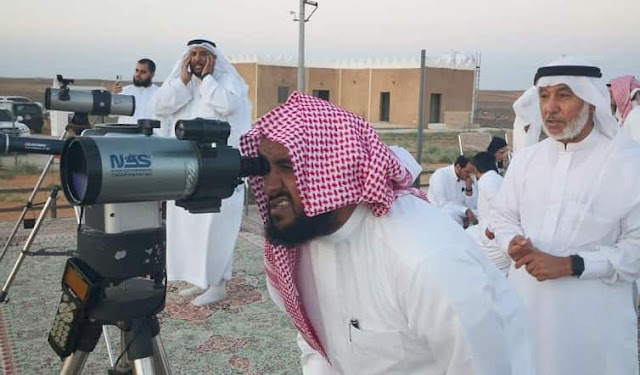In the Islamic calendar, the sighting of the crescent moon holds profound significance, marking the beginning of each lunar month. Among these moments, the sighting of the Shawwal crescent in Saudi Arabia stands out, as it heralds the conclusion of Ramadan and the arrival of Eid al-Fitr, a joyous occasion celebrated by Muslims worldwide.
Eid al-Fitr, the Festival of Breaking the Fast, is one of Islam’s most important festivals, commemorating the end of Ramadan, the month of fasting and spiritual reflection. The sighting of the Shawwal crescent moon signifies the end of Ramadan’s fasting period, ushering in a day of gratitude, feasting, and communal prayers.

In Saudi Arabia, the sighting of the Shawwal crescent holds particular significance due to the country’s central position in the Islamic world and its custodianship of the holy cities of Mecca and Medina. As the birthplace of Islam, Saudi Arabia plays a pivotal role in setting the Islamic calendar and determining the beginning of lunar months.
The process of crescent moon sighting in Saudi Arabia is meticulously carried out by religious authorities and experts, who use advanced astronomical calculations and traditional methods to spot the slender crescent marking the start of Shawwal. This sighting is announced officially, signaling the end of Ramadan and the start of Eid celebrations.
The announcement of the Shawwal crescent in Saudi Arabia resonates beyond its borders, impacting Muslims around the world. Muslims look to Saudi Arabia as a beacon of Islamic authority, relying on its decision regarding the lunar calendar to determine the timing of their own Eid celebrations.
The significance of the Shawwal crescent extends beyond its role in marking the end of Ramadan. Eid al-Fitr is a time of charity, compassion, and unity, where Muslims come together to share meals, exchange gifts, and strengthen bonds of brotherhood and sisterhood. The joyous atmosphere pervades homes, mosques, and communities, as families gather to partake in festive rituals and prayers.
Moreover, the Shawwal crescent serves as a reminder of the cyclical nature of time in Islam, emphasizing the importance of lunar months and the divine order of the universe. Its sighting evokes a sense of renewal and hope, as Muslims embark on a new lunar month filled with opportunities for spiritual growth and devotion.
In conclusion, the sighting of the Shawwal crescent in Saudi Arabia holds immense significance in the Muslim world, symbolizing the culmination of Ramadan and the dawn of Eid al-Fitr festivities. Beyond its astronomical importance, the Shawwal crescent embodies the spirit of unity, gratitude, and renewal that defines the Islamic faith.


